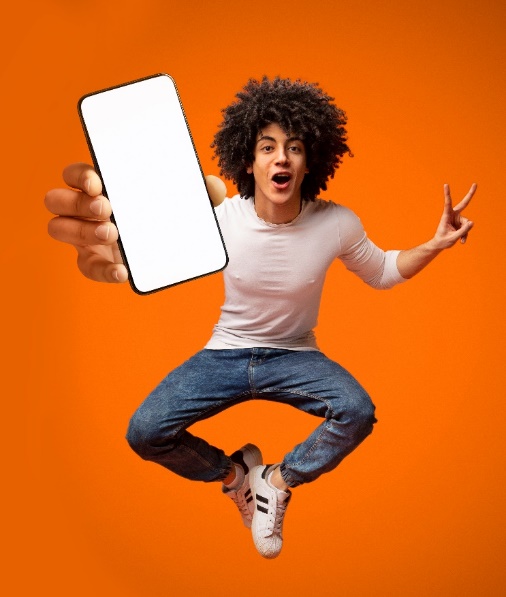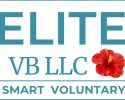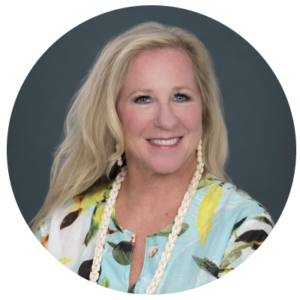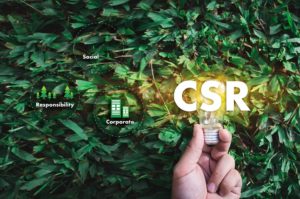Pamela Whitfield, CVBS
8/6/22
The Pandemic created tectonic shifts that has changed how we communicate benefits and, in this blog, I am going to share with you the greatest ingredient for a highly effective enrollment is to pair great products with a virtual enrollment solution, supported by a custom digital communication campaign.

But before we do that, let’s take a short trip back to memory lane (pre-pandemic) and review the typical open enrollment process. Once voluntary plans designs are in place, HR might send out a flyer via e-mail, employees were asked to show up for a group meeting, they had to sit through a lengthy meeting and then sit with a benefit counselor to make their elections and hope they qualify for the coverage. Boring, time consuming and not a joyful experience.
And studies show employees like this process about the same as buying a used car or doing their taxes. Not only a dreaded experience, but it’s more serious than that. Brokers work hard to deliver great benefits for their clients (not to mention, benefits rank second as a company’s largest company expense) and unfortunately 63% of employees make the same elections year after year. As well, 20% say they don’t enroll in voluntary benefits, not because of money, but because of lack of education. And upon surveying employees following open enrollment, after all the time, energy and money spent to deliver great benefits, 70% of employees are unconfident in the decisions they made.
Many benefits brokers “hope” that their virtual voluntary enrollment will be a success, however hope is not a strategy. Great virtual enrollment will happen with the following ingredients:
- Learning from the client how the pandemic affected communication within their organization
- The “footprint” of the staff (physically and demographically)
- Positioning the correct voluntary benefits that complement the existing benefits
- Deciding WHEN to either introduce voluntary or replace (during open enrollment or “off-cycle”) and then
- being creative and designing a full-blown digital communication campaign that will be the rocket fuel that will propel an enrollment experience as the prior ways really weren’t successful anyway.

It’s time to “flip the script” on the old ways of delivering and enrolling in benefits as our new post-pandemic workplace has given us a gift: it has provided us with an unparalleled opportunity to leverage high tech with high touch and prepare for successful enrollments results like never before.
As mentioned above, part of the secret sauce is combining video/smartphone/text as the primary method of communication, so let’s jump right in by understanding the Power of Video in 2022:
- #1: Video is the #1 source of information for 66% of people
- Video use by generation: Americans spend an average of 7 hours watching videos per week…on mobile phones alone. By generation/age groups, mobile users:
- Aged 18-34 spent 105 minutes watching online videos per week
- Aged 35-49 spent 79minutes
- Aged 50-64 watched 48 minutes
- Aged 65+ just 24 minutes
- We buy based on videos: 93% of businesses gain new business because of a branded video (this means people are making buying decisions based on video, favoring organization that use video and leaving those who don’t behind)
- Instagram: 75% take action after watching a video
- Twitter: 82% take action after watching a video
- Sharing is powerful: 92% of mobile video viewers shared content with others
- Educational videos are powerful 86% of people want brands to produce more videos and EDUCATIONAL videos are desired by 36% of them
- 66% of people choose video to learn more about a product: Video engagement stats indicate that when people are looking for information about a specific product or service, 66% first turn to videos, 18% of all choose articles, 4% prefer infographics, 3% refer to the manual, 3% attend webinars, and 2% request a sales call or a demo.
- Its effectiveness is measurable: analytics allows you to know exactly how many times the video was watched, by whom, when it was watched on what device
- Why video is so effective: And finally, the primary reason people learn well via video is because the human brain processes videos 60,000 times faster than it does text/written word.
Regarding the advantages of video for an organization, brokers can rest assured that when they leverage custom designed videos within an enrollment experience, it makes sense as:
- Video save times and resources: When it comes to video training, no money is spent to pay someone to train employees. Since the video is recorded and already paid for, it can be used in multiple formats: text, e-mail, web, landing page, Facebook, and HR need not spend time reviewing the benefits with staff when a video can accomplish this more effectively and efficiently. The videos also become a living library for HR, telling the benefit story in pictures and story, as well as for employees to access until it loses value and then is simply deleted.
- Video is flexible – replacing a flyer: My agency makes videos for every message possible: setting the stage for open enrollment, individual drip product videos that highlight the need for the benefit, post-enrollment videos asking employees to fill out a survey, quarterly wellness reminder videos, and of course, annual pre-enrollment videos to start it all over again. You name it, custom creative video beats a benefit flyer or group meeting all day long (although they also compliment those forms of communication as well).
- Increased information retention: Remember the old group meetings? Studies show that after 7 days in a training session, employees have forgotten 65% of what was covered (and 6 months later, employees have forgotten 90%). When visuals are included in a training session, such as on critical illness, disability, pet or life insurance, retention goes up to 65% and we know that people will remember 20% of what they read and 80% of what they watch.
- Video can tell a story with emotion & hyper-personalization: Benefits are more important now for recruiting and retention, and job seekers are looking for employers that care about their financial health, their emotional/mental wellness, diversity, life-work balance and much more. In summary, they want to know the company cares about them. Employers need a platform to articulate WHY employees should work for their company and how their benefit package will help makes their lives better.
The opportunity before is the combination of text with video as text beats all delivery systems:
- Text has an “open rate” of 98% (versus 20% via e-mail)
- 90% of text are read within one minute of opening and
- 75% of Millennials prefer SMS

While large companies might have big budgets for video creation, many small to mid-size organizations do not and if that’s the case, it’s imperative to work with one who know how to conduct a “digital needs assessment”. This process will include a demographic analysis, combined with understanding communication methods within the organization, and more.
Custom videos are not Brainshark or stock benefit videos from the carriers. They are custom designed for each stage of the enrollment process, branded with the employer’s logo, colors, employee demographics, culture, and values. Videos that can also “star” their own CEO, HR manager, even the loading dock guy as we naturally resonate with people from our own tribe.
Pre-enrollment videos begin the digital journey, “reframing” the upcoming enrollment experience, which is critical. It takes the viewer on a journey, showing how easy the process will be, what the benefit is for the employees, and that time is limited.
Individual product “drip videos” speak to the importance of each benefit, how it will benefit them, approximate premium and more. This “reframing” is needed to break the negative thought pattens of past enrollment experiences. These videos are emotional, fun and nothing to do with sales. They are educational in nature and sets the stage for other videos or live webinars (which is ideal) to dive deeper into each benefit. This strategy not only delivers high enrollment percentages but also aids HR by amplifying their message about how, what, and why the new benefits will make a difference in their lives and can be used immediately for recruiting materials.
At our agency, we don’t just use video to replace the clunky flyer (which no one reads anyway), rather, we adapt each client’s individual message on every platform that each generation relates to: Instagram, Twitter, Facebook, etc. so it’s important to work with a consultant that knows how to communicate to each generation at the workplace. While this process takes time, it’s invaluable as almost every virtual enrollment these days offers no health questions only during open enrollment (once a year).
Just like the rocket, a well branded digital communication “campaign” puts the broker/employer in control of the message, including the timing of the message, with the goal of watching the analytics meter go sky high as employees themselves share the content with other employees and family members. Once a message starts going viral, the ship is coasting with grace and ease, but the key is to know the elements that are needed to make a video have a trajectory all on its own…as it’s a science.
Know that video campaigns have a long-life cycle. Best practices deem re-designing an organization’s video campaigns annually, ensuring it morphs and grow with the organization as winds may blow and storms may come, but the rocket will always have the fuel it needs to get back on track.
In closing, choosing a voluntary broker partner who understands the complexity of communicating the multi-generational workplace we have now is not optional: it’s rocket fuel to propel to enrollment to success. Veterans in the voluntary space know that there is only one shot at getting the maximum participation with “guarantee issue”. There’s no trying to “get it right” in year two or three. It’s do or die…success or fail. I choose success as employees need, want, and will buy products that provide financial protection and peace of mind, and employers want to work with brokers who know the “secret sauce” as videos are way more fun than boring group meetings anyway.
Onward and upward!
Mahalo, Pamela




